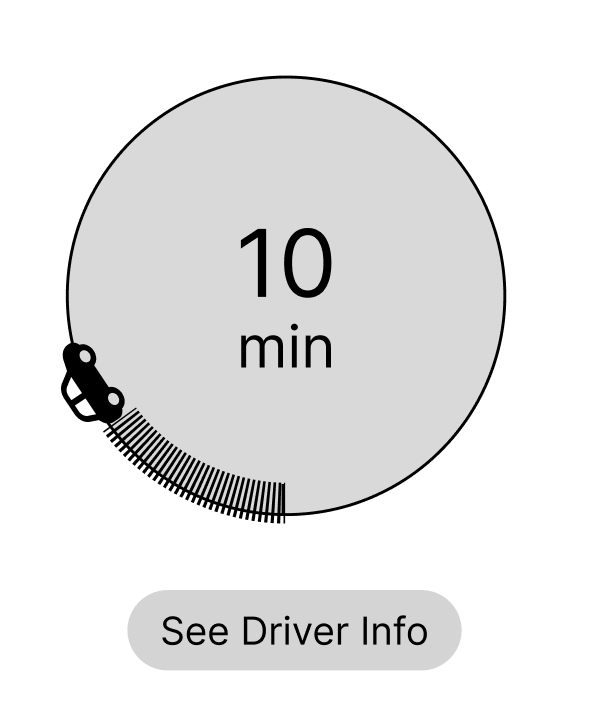
EZ Rider
A Mobile and Smartwatch compatible service
EZ Rider is a product that allows users to connect their preferred ride share service, preload their home address, and call a car to their exact location by tapping one simple button.
Research
Goals
To understand common scenarios where users hail ride share services
Determine user pain points when using such services (wrong location, mis clicking, typos)
Understand general attitude towards voice-interfaces and their use cases
Determine scope of app utilization within our target audience
Questions
How often do users use ride share service applications?
What scenarios do users find themselves using a ride share application?
What features are most valued by users?
What challenges do users face within this process?
In conducting an online survey , we found 80% of users had regularly used voice-interface services before (Siri, Alexa, ect.) when unable to use their hands or for the simple ease of use.
User Interview Results
We found that users primarily use ride share services to get home from a night of drinking
Users found frustration in having to navigate through extra features, especially while inebriated
Users have differentiating habits when it comes to VUI, some find it useful but some find it difficult to be understood
Competitor Analysis
Within our research scope we were unable to find a competitor who had a similar idea. There are very few apps specifically targeted to inebriated audiences outside of general services. User pain points included frustration with extra features and difficult navigation. We wanted our product to encompass these ideas and produce the easiest possible path for users to get home within our application alone.
User Insight Statement
Users who utilize ride service apps need a fast, effortless way to order a ride that doesn't require much time, physical interaction, or app navigation because they may be unable to do so successfully after imbibing or accessibility limitations.
Definition and Ideation
Storyboard
Value Proposition
Our goal is to create a simple application that helps users who are inebriated have an easy way to get home, by providing a single button they can press to automatically call them a car while eliminating extraneous navigation or mistakes with inputting an address.
Low Fidelity
Mobile Onboarding
Upon initial download, users are prompted to enable location services and input home location, along with offering a Travel Mode if the user needs a temporary change in location.
Gamification
Often users will order a car then leave their current location for last minute errands or “one last drink”, the addition of the game encourages the user to stay where they are after their location is sent to a driver.
UI Style
We wanted the button to be enticing and seem “fun” to use while keeping users focused on the app. We wanted the button to those found on arcade games.
High Fidelity
Conclusion
Future Iterations
Although this product was created with a specific audience in mind we recognized that this product has a lot of potential in future iterations, especially in terms of accessibility. The addition of the VUI feature allows for broader accessibility, and the simplicity of pressing “the button” could stretch beyond ride share services and may be used as a quick emergency alert for example.
Final Thoughts
Throughout this process, my team constantly asked ourselves “How are we different? How does our product stand out? Why would users want to use our product?”. Once we discovered our target users through research, we catered our product to their frustrations with ride share services. The addition of games was justified by our competitors, and strengthened the enticement of using this product.














